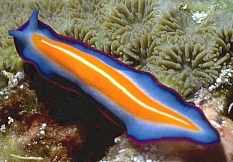
by Rick O'Connor | Jul 26, 2024
People enjoy animals. Zoos and wildlife parks are popular tourist destinations and animal programs are popular on television. It is usually the larger predator animals that get our attention. Sharks, panthers, and bears are popular. People like turtles, raptors, and snakes. Other animals are popular as well like antelope, elephants, and deer.
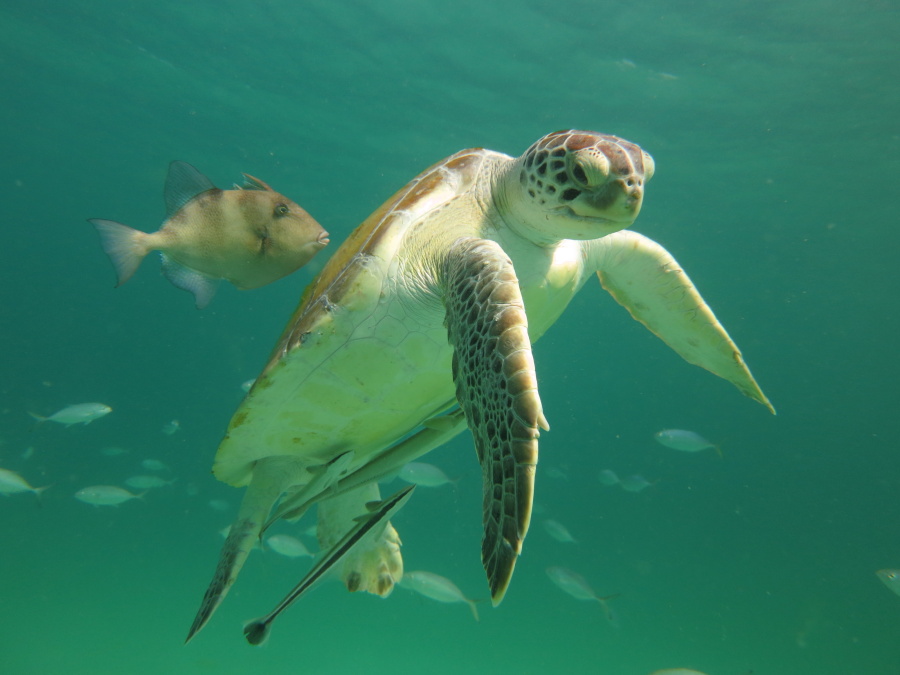
The green sea turtle.
Photo: Mike Sandler
At public aquariums you see exhibits with whales, sharks, and sea turtles. You also see tanks with reef fish, crabs, and octopus drawing crowds. But one group of animals that has never really drawn attention – either at public parks or wildlife television shows – are worms.
Worms are a world of the creepy and gross. To us, their presence suggests dirtiness or environmental problems. But worms are abundant in our environment and play an important role in ecology. In this series we will meet some of them and learn more about their lives. We begin with the flatworms.
As the name suggests, flatworms have flat bodies. In many species their heads can be identified by the presence of eyespots. Eyespots differ from eyes in that they detect light, but do not provide an actual image. Biologists describe animals as being either positively or negatively phototaxic. Most flatworms are negatively phototaxic, they do not like light. To them, light indicates daytime. A time when the predators can see and attack them. So, when they detect light, they move under rocks, mud, whatever to avoid being detected.
Most flatworms are less than 10mm (0.4 in) in length, though some are 60 cm (24 inches). They possess a mouth on their belly side (ventral) and often it is in the middle of the animal, not at the head end. This mouth leads to a simple stomach, but they lack an anus so solid waste must exit the worm through the mouth – what is called an incomplete digestive system.

This colorful worm is a marine turbellarian.
Photo: University of Alberta
One class of flatworms are the free-swimming turbellarians. Most are carnivorous, feeding on small invertebrates and dead carcasses. Some feed on sessile creatures like oysters and barnacles. And some feed on microscopic plants like diatoms. The carnivorous species wrap their prey with their bodies secreting slime over them. They engulf their prey whole. There are two classes of flatworms that are parasitic: the trematodes (flukes), and the cestodes (tapeworms).
Flatworms lack an internal body cavity (coelom) and thus lack internal organs. Not having lungs and kidneys they must take in need gases, and other materials, and well as expel nitrogenous waste, through their skin. Being flat increases their surface area and the efficiency of doing this. This is why they are flat.
Reproduction in flatworms occurs in different ways. Some will reproduce asexually by simple fission – they split apart producing two worms. Many species reproduce sexually using sperm and egg.
Another class of flatworms are the parasitic trematodes; commonly called flukes. They resemble turbellarians in body shape and design, though the mouth is usually at the head end. Most are only a few centimeters long, but one can reach the length of 7 meters (24 feet)! Their bodies are covered with a skin-like material that protects them from the digestive enzymes of their hosts.
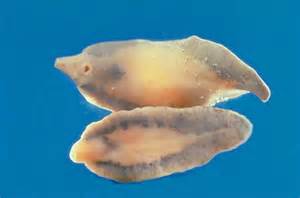
The human liver fluke. One of the trematode flatworms that are parasitic.
Photo: University of Pennsylvania
As with turbellarians, flukes are hermaphroditic but use internal fertilization with other worms to produce young, though self-fertilization can – and does – happen. Their life cycles can include one or several hosts. The primary host, the one the adults reside in, are usually vertebrates, most often fish. The intermediate hosts, the ones the juveniles reside in, are often snails but can be other species.
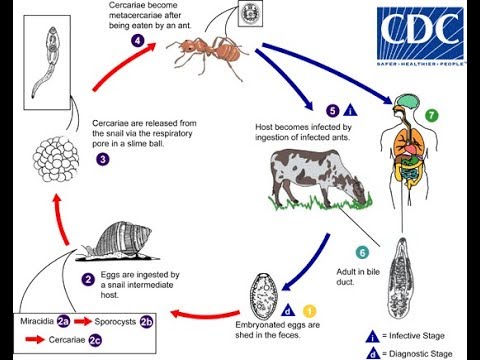
Life cycle of a trematode. Image: Center for Disease Control.
The life cycle is complex, but a general one would include the fertilized eggs being encased in a shell and released into the environment via the feces of the primary host. A ciliated larval stage hatches from this egg and is either consumed by the intermediate host or penetrates the skin of it. Once inside the second larval stage begins. This eventually becomes a third and fourth larval stage. At the fourth larval stage the young worm possesses a mouth and digestive tract. At this stage it leaves the intermediate host as a free-swimming larva seeking a second intermediate host. Here it goes through more larval stages and eventually becomes encased within a cyst (a hard shell). The encysted larva stage enters the primary host (a vertebrate) after that primary host consumes the second intermediate host. Here it develops into the adult trematode.
A third class of flatworms are the parasitic tapeworms – Class Cestoda. Tapeworms differ from other flatworms in that they have a round head – called a scolex – attached to a flat body, and they lack a digestive tract. The flat part of the body is made up of small square segments called proglottids. They continually add proglottids and can become quite long – some have measured over 40 feet! The scolex has four suckers and a ring of small hooks with which they can attach to the inner lining of the digestive tract with.
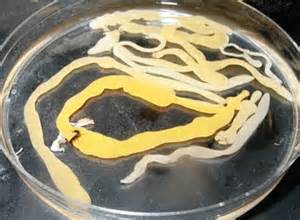
The famous tapeworm.
Photo: University of Omaha.
The reproductive organs occur within the proglottids. Cross fertilization between these hermaphroditic worms is the rule but self-fertilization does happen. The fertilized eggs are released when the proglottid ruptures and exit the host via the feces.
Tapeworms do require intermediate hosts. The extruded egg hatches into a ciliated larva which is consumed by the intermediate host before that host is consumed by the primary host – typically a vertebrate.
As we can see the lives of these flatworms are (1) secretive, and (2) not pleasant to think about. But they do play a role in our marine and estuarine ecosystem and are very successful at what they do. They should be appreciated for their success.
In our next article on the World of Worms we will look at the nemerteans.
Reference
Barnes, R.D. (1980). Invertebrate Zoology. Saunders Publishing. Philadelphia PA. pp. 1089.
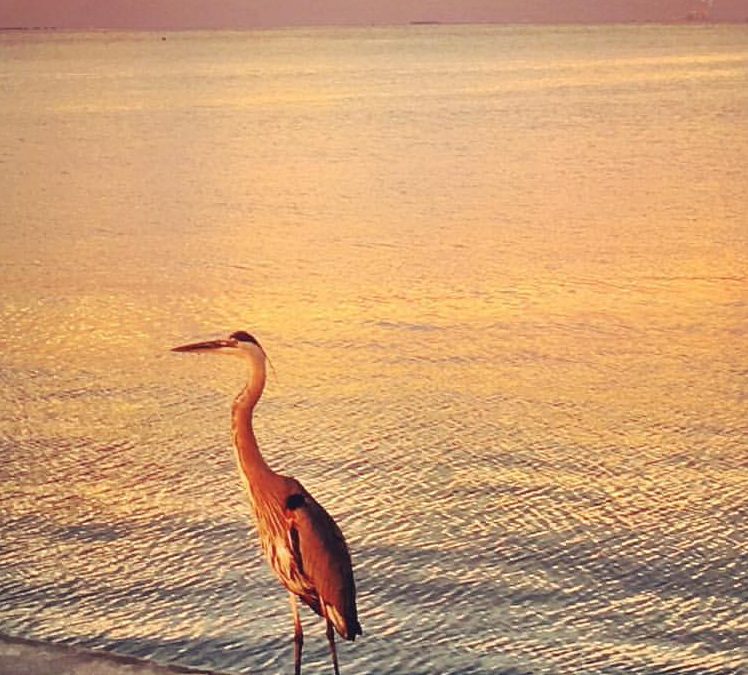
by Rick O'Connor | Jul 19, 2024
In this series we have found that in the 1970s and 1980s climate scientists developed models that could predict the effects of a warming planet on society.
We saw that society, at that time, had little faith in the accuracy of those model predictions.
We also saw that natural occurring events, like tropical storms and the eruption of Mt. Pinatubo, gave climate scientists an opportunity to test their models – and their models past with flying colors.
We have seen the development of international councils and panels to address climate change, enhance the models, and provide advice on how to turn the potential negative effects of a warming planet around.
We have also seen that many of the predictions from those early models are occurring, some have occurred faster than the models indicated they would.
So…
Is there anything we can do about it?
The answer is pretty simple really. Just like those trying to lose weight – you need to either reduce the calories you take in and/or burn those calories off. With climate you need to reduce the amount of carbon you put into the atmosphere and/or remove the excess carbon.
In 2006 NASA climate scientists stated that we had about a decade to make some serious policy changes to avoid irreversible climate change that could cause economic and ecological havoc. They mentioned we needed to cut CO2 emissions between 50-85% by 2050. Their suggestions could be found on both sides of the solution model.
| Reducing Greenhouse Emissions |
Removing Greenhouse Gases |
| Cut fossil fuel use (especially coal) |
Add technologies to both smokestacks and combustible engines to remove CO2 in their emissions |
| Shift from coal to natural gas |
Sequester CO2 by planting trees |
| Improve energy efficiency |
Sequester CO2 underground |
| Use more renewable energy and make these technologies available in developing countries |
Use better land management practices in agricultural |
| Reduce deforestation |
Sequester CO2 in the deep ocean |
| Use more sustainable agriculture and forestry methods |
|
Other methods that could help reduce CO2 emission…
- Increase the fuel efficiency of our cars. One target had vehicles getting 60 mpg by 2057.
- Reduce the distance we drive each year. One target had no more than 5000 miles/year.
- Cut electricity use in homes and offices by 25%.
- Increase solar power use.
- Increase wind power use.
- Increase the use of biofuels.
- Stop deforestation.
- Better methods in agriculture.
- Install scrubbers in fossil fuel burning engines to clean emissions.
So… How are we doing with these?
Cars are more fuel efficient than they were decades ago. Many have turned to electric cars, or hybrids.
It seems that we are driving MORE miles each year – not less. Our society is designed around the need for an automobile – we cannot function without one. And our city planning seems to have us living farther and farther from our work. When I was younger there was much talk about mass transit to reduce traffic and emissions. In large cities where this was already ongoing it continues. But in the other parts of the county this has not really caught on. We are still driving too much.
There are methods of making homes more efficient. My wife and I adopted some of these as we rebuilt our house after a fire. Compared to neighbors and friends, our power bills are much lower. Many of these methods and technologies are being used in new home developments and are encouraging.
Solar farms are increasing – even along I-10 in the Florida panhandle. There is some concern that these solar farms are replacing food farms, but there is an attempt to do this. Out west we see the same.
The same can be said for wind farms – at least out west.
According to the U.S. Energy Information Administration, biofuel production has increased each year since 1980.
Deforestation has not slowed. As a matter of fact, many developments in the Florida panhandle begin by removing ALL trees. In some cases, they replace lost trees with saplings in the new neighborhoods. But a major source of carbon removal has been removed from the system. There is much more that needs to be done with this issue.
Speaking for the farmers in the Florida panhandle – yes… many have turned to better land management practices to protect their land and reduce, or sequester, carbon.
“Scrubber” in internal combustion engines is required by law in the U.S.
Despite some of these positive changes, carbon in our atmosphere continues to increase – not decrease. Part of this is because this is a global issue and that all of human society must work together to reduce greenhouse emissions. Some countries are doing better than others. There are international summits every few years to discuss what the world should do to tur the tide on climate. But all countries need to attend, particularly those producing the largest amount of greenhouse gases.
Here at home, there is resistance to reducing the use of fossil fuels, so many programs have not moved as far forward as they need to move. It is also important to understand that even with the behavior changes we seek, it will take time to undo the damage already done. We will not see improvement right away. Enacting new programs and technologies now could take over 100 years to see the impacts. It is important to understand that the longer we put changes off, the longer it will be before we see any positive benefits from those actions.
There is the concern that the political and public will is still not there to make these changes happen. But they will need to if we are to see things begin to improve.
Until then – you can do your part. Use fossil fuels as little and efficient has you can. Plant trees to help remove carbon dioxide and shade your house so you need less air conditioning. There are many other things you can do to help turn the tide on climate. Check with your local extension office for more ideas.
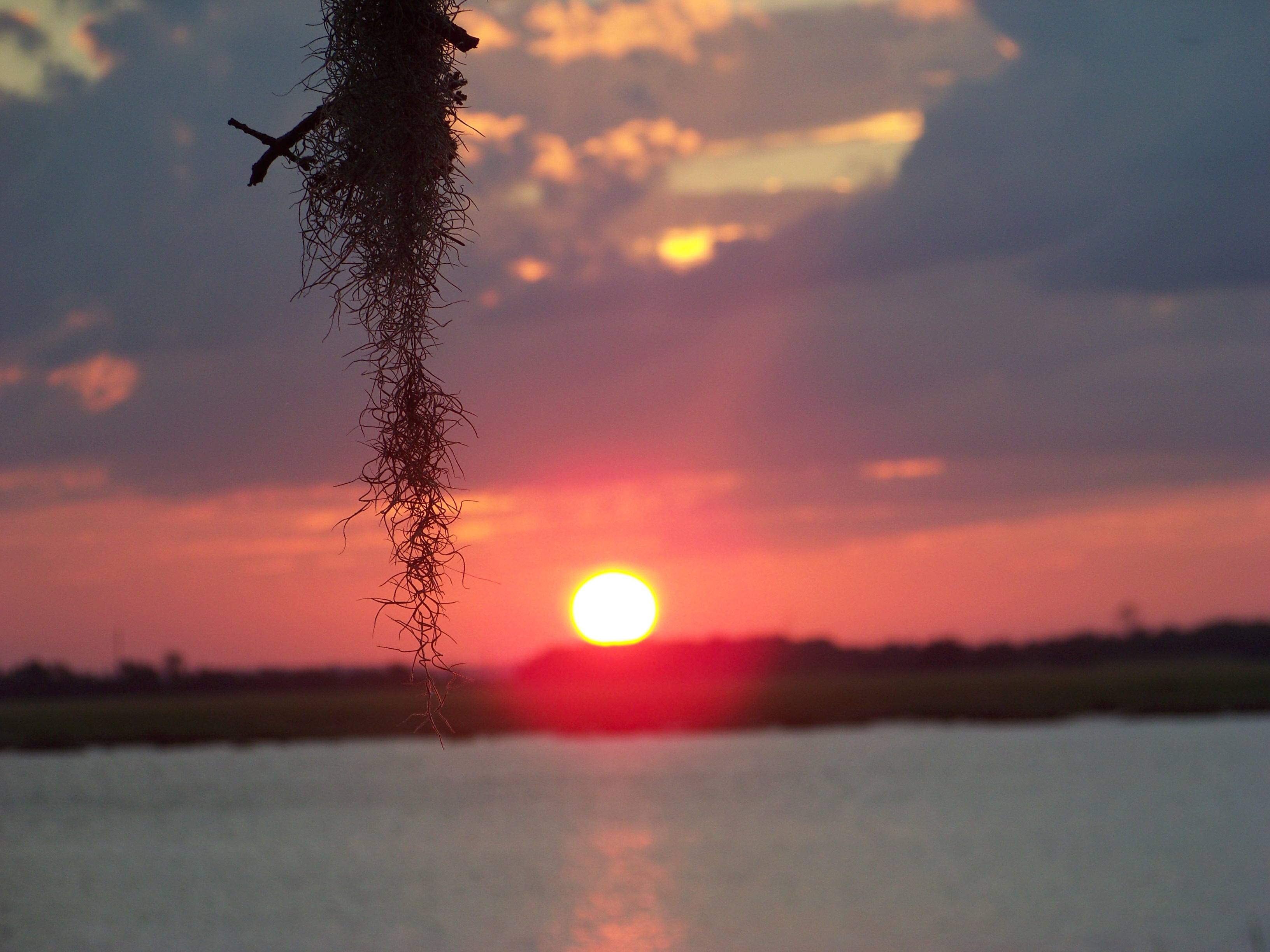
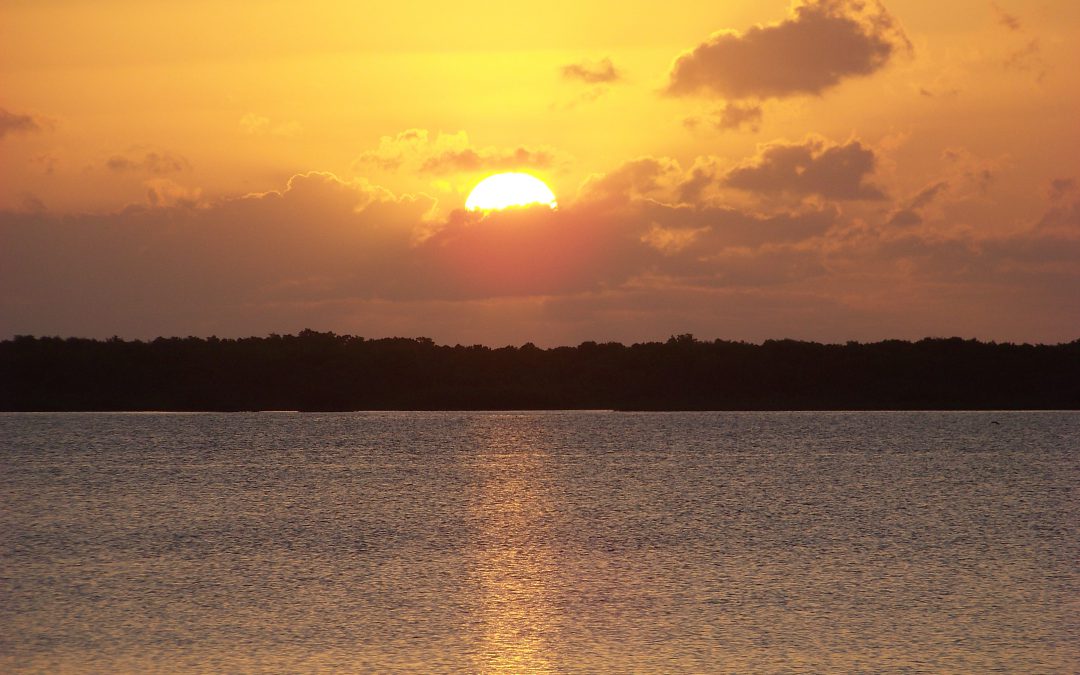
by Rick O'Connor | Jul 13, 2024
As I mentioned in Part 1, I taught environmental science in the 1990s and the first decade of the 21st century. Reviewing the textbook used for that course I provide information below that was taught at the time. The purpose of this series on Another Look at Climate Change is to see whether the predictions made at that time are occurring now. Part 3 – What Are Some Possible Effects…\
One question expressed in the 1990s, as it is today, is why we should be concerned about a few degrees change in temperature. Many at the time, and today, did not see the change of a few degrees any different than the change that occurred between the months of May and July. What’s the big deal? The response is that scientists were not looking at temperature changes over a short period of time, but over longer periods – and how rapidly they were changing. In the ancient past, the warming of the planet was over thousands to hundreds of thousands of years. It was now occurring over decades.
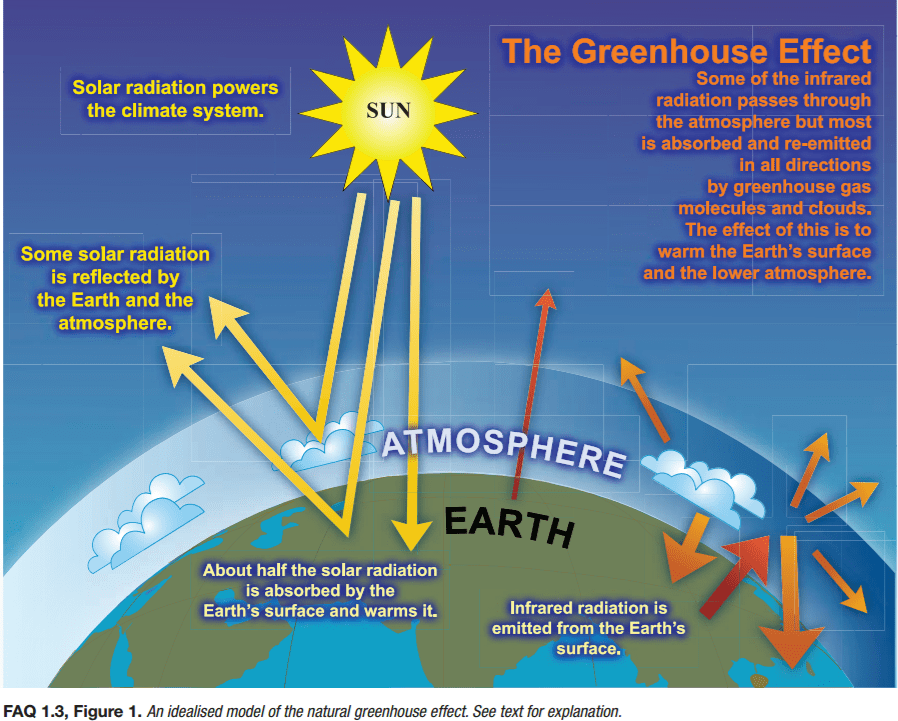
The greenhouse effect.
Image: NOAA
Climate models at the time were providing information on where food could be grown, how much could be grown, where droughts and flooding were going to increase, and where wildlife and people might have to live. And, due to the rapid change in temperatures, that we were going to have to deal with it during the next century.
In 2003 a U.S. National Academy of Sciences report provided a “worst-case scenario” of climate and ecological changes that may occur. It mentioned that we might reach an irreversible tipping-point and afterwards would not be able to reverse the effects for thousands of years. It described ecosystems collapsing, low-lying cities would flood, vast wildfires in the forests, grasslands drying out from prolonged droughts. As mountain glaciers melt, rivers that bring needed drinking water to many would dry up. There would be pre-mature extinction of up to half of the planet’s species, prolonged heat waves, increased flooding, more destructive storms, and the spread of tropical diseases beyond their current range.
NOTE: Many of these predictions continue to be discussed today – some are occurring.
The following lists were some of the predictions provided at the time. Do you see any that have occurred?
Effects if CO2 levels reach 450 ppm – NOTE: It was stated at that time that this was unavoidable.
- Forest fires will worsen.
- Prolonged droughts will intensify.
- Deserts will spread.
- Major heat waves become more common.
- Conflicts over water supplies increase.
- Modest increases in crop production in temperate regions.
- Crop yields fall by 5-10% in tropical Africa.
- Coral reefs affected by bleaching.
- Many glaciers melt faster and threaten water supplies for millions of people.
- Sea levels rise enough to flood lo-lying coastal areas – such as Bangladesh.
- More people exposed to malaria.
- High risk of extinction for Arctic species – such as the polar bear.
CURRENT UPDATES ON THESE PREDICTIONS…
- In 2024 the Western Fire Chiefs Association reported that though the number of annual wildfires has decreased since the 1990s, the area of land destroyed by wildfires has increased. In the 1990s there was an annual average of 3.3 million acres burned by over 78,000 wildfires in the U.S. Since 2000 a little over 70,000 wildfires have burned over 7 million acres a year. This is due to great fuel load due to drier/drought conditions largely caused by climate change.
- In 2023 two NASA scientists confirmed that droughts are becoming more frequent.
- In 2018 a study reported by the National Science Foundation confirmed that the Sahara Desert has expanded 10% since 1920.
- The U.S. EPA reported in 2023 that heat waves in major cities have increased from 2 a year in the 1960s to 6 a year during the 2010s and 2020s.
- The University of Southern California reported that conflicts between states over water supply from the Colorado River are occurring. Others indicate that, though nonviolent at this point, conflicts across the planet over water have begun.
- Climate change may negatively affect production of corn and wheat by 2030.
- Wheat grows well between 15° – 20°C. However, in sub-Sahara Africa temperatures already exceed this. It is believed that by 2030 wheat production will decrease by 10-20% from 1998-2002 yields.
- NOAA reported in 2024 that the world is currently going through a fourth coral bleaching event. Heat stressed bleaching has been a problem in both the northern and southern hemisphere.
- Recent evidence suggests that ancient glaciers are melting more than a quarter of a mile a day, which is faster than the models predicted.
- The annual frequency of high tide flooding in the U.S. has more than doubled since 2000 – and is predicted to triple by 2050.
- Although the risk of getting malaria in the U.S. is low, cases are increasing. Particularly in Florida and Texas.
- I could not find any reports of Arctic species that have gone extinct, but there are numerous reports of species endangered of it. One report stated that at the current rate of warming, polar bears could be extinct by the end of the century.
OTHER NOTES:
According to a 2005 study, between 1979 and 2002 the area of the earth’s land experiencing severe drought increased from 15% to 30%. The 2007 IPCC report predicted this increase would continue.
The 2021 IPCC report stated the same, the frequency increase will continue.
This “browning” of the earth will enhance other ecological problems such as reduced soil moisture that will impact plant growth rates, impacting their ability to remove CO2, enhancing warming, and causing some bodies of water to dry up and rivers enable to reach the sea.
The light color of snow and ice in the polar regions reflects solar radiation helping to cool the planet. The melting of this snow and ice – which is predicted / and is happening – will increase the absorption of solar radiation increasing warming. A 2006 NOAA report predicted arctic summers with no floating ice by 2040. Other studies suggest this will happen as early as 2013.
According to the 2007 IPPC report the average sea level is very likely (90-99% certainty) to rise 0.6-1.9 feet during this century. In 2022, global average sea level set a record high – 4 inches above the 1993 level… and the 2021 IPPC report stated that we have passed the tipping for sea level rise – it will rise no matter what we do. We are at a point that coastal communities need to begin planning for this. Predictions from that time on the affects of sea level rise include:
- Degradation or destruction of at least one third of the world’s coastal estuaries, wetlands, and coral reefs.
- Disruption of many of the world’s coastal fisheries.
- Flooding of low-lying barrier islands and erosion of gently sloping coastlines.
- Flooding of agricultural lowlands and deltas where rice is grown.
- Contamination of coastal freshwater aquifers with salt water – salt intrusion.
- Submergence of low-lying islands in the Pacific, Caribbean, and Indian Oceans.
- Flooding of coastal cities.
It is known that the amount of methane (a major contributor to greenhouse gases) locked in the permafrost is 50-60 times great than the amount released by burning fossil fuels. According to a 2004 study, 10-20% of the Arctic’s permafrost may thaw this century – enhancing warming. A 2024 report stated that 7% of the current permafrost has melted.
Ocean currents move CO2, warm and cold water across the planet regulating the climate. There was concern at the time that the melting of the poles (particularly Greenland) could introduce enough freshwater to alter these currents and impact the climates of northern Europe and northeastern North America. At the time, scientists did not see this as a threat in the near future.
The increase in extreme weather…
Heat waves, droughts, desertification, flash floods from prolonged rain could all happen…
At the time there was disagreement as to whether warming would increase the frequency and intensity of tropical storms and hurricanes. A 2008 study found that since 1950 for every 1°F increase in ocean temperature in the Atlantic, the number of hurricanes and tropical storms would increase by one third. It also showed that the number of hurricanes with wind speeds of 110 mph or greater increased by 45%. NASA stated since 1980 hurricane activity in the North Atlantic has increased but thus far much of this has been from natural climate variation. However, they did point out one study that showed evidence that the rapid intensification of these storms cannot be explained by natural climate variations and could be connected to climate change.
As the planet warmed it was predicted that ecosystems would shift and change. Some tropical species would disperse further north – tropicalization. We have witnessed the expansion of mangroves into the northern Gulf of Mexico. According to the 2007 IPCC report, about 30% of the land-based plants and animals could disappear. A 2019 United Nations article stated that the Intergovernmental Science-Policy Platform on Biodiversity and Ecosystem Services reported that the rate of extinction has accelerated. Warming was also predicted to disrupt biological clocks of migratory species and the Florida Museum of Natural History has already reported this is happening with migrating songbirds. Warming was also predicted to increase the populations of some species of insects and fungi that damage trees.
There were also predictions to the health of humans…
One will be the increased deaths due to heat waves. Others would be increased disease from insects and allergy issues from increased pollen. A 2024 U.S. Environmental Protection Agency report showed that human deaths related to heat waves has increased since 1979.
This snapshot gives us an idea of how well the computer models predicted the impacts of climate change and whether we should pay closer attention to what the current models are saying for the future. The 2021 IPPC report indicated that we have passed the tipping point for sea level rise and are approaching the tipping point for other possible impacts.
There has been talk about climate for a long time. Though many things are beginning to happen there is more our world can do to help reduce the risk of these possible impacts. In Part 4 of this series, we will look at what was suggested a decade ago and how we are doing with those.
References
Miller, G.T., Spoolman, S.E. 2011. Living in the Environment; Concepts, Connections, and Solutions. 16th Edition. Brooks and Cole. Belmont CA. 674 pp.
Are Wildfires Increasing or Decreasing in the U.S.? The Western Fire Chiefs Association. 2024. https://wfca.com/wildfire-articles/are-wildfires-increasing-or-decreasing-in-the-us/#:~:text=The%20amount%20of%20land%20burned,due%20to%20approximately%2078%2C600%20fires.
Cawdrey, K. 2023. Warming Makes Droughts, Extreme Wet Events More Frequent, Intense. NASA Explore. https://www.nasa.gov/centers-and-facilities/goddard/warming-makes-droughts-extreme-wet-events-more-frequent-intense/.
New Study Finds World’s Largest Desert, the Sahara, Has Grown By 10% Since 1920. National Science Foundation News. https://www.nsf.gov/news/news_summ.jsp?cntn_id=244804.
Climate Change Indicators: Heat Waves. 2023. U.S. Environmental Protection Agency. https://www.epa.gov/climate-indicators/climate-change-indicators-heat-waves#:~:text=Heat%20waves%20are%20occurring%20more%20often%20than,the%202010s%20and%202020s%20(see%20Figure%201).
The Water Wars of the Future are Here Today. The University of Southern California Today. https://today.usc.edu/the-water-wars-of-the-future-are-here-today/.
Gray, E. 2021. Global Climate Change Impact on Crops Expected Within 10 Years, NASA Study Finds. NASA Global Climate Change News. https://climate.nasa.gov/news/3124/global-climate-change-impact-on-crops-expected-within-10-years-nasa-study-finds/.
Munang, R., Andrews, J. 2014. Despite Climate Change, Africa can Feed Africa. Africa Renewal. https://www.un.org/africarenewal/magazine/special-edition-agriculture-2014/despite-climate-change-africa-can-feed-africa.
NOAA Confirms Fourth Coral Bleaching Event. 2024. NOAA News and Features. https://www.noaa.gov/news-release/noaa-confirms-4th-global-coral-bleaching-event.
Harvey, C. 2023. Glaciers May Melt Even Faster Than Expected, Study Finds. Scientific American Newsletter. https://www.noaa.gov/news-release/noaa-confirms-4th-global-coral-bleaching-event.
Rising Seas, Flooding Coasts. 2023. Climate Central. https://www.climatecentral.org/climate-matters/rising-seas-flooding-coasts-2023.
Malaria in the U.S. – Is Climate Change Affecting Disease Spread? 2023. Gavi. The Vaccine Alliance. https://www.gavi.org/vaccineswork/malaria-us-climate-change-affecting-disease-spread#:~:text=A%20warmer%20world%20means%20mosquitoes,as%20dengue%20fever%20and%20malaria..
Climate Change 2021: A Summary for All. 2022. Intergovernmental Panel on Climate Change (IPCC). https://www.ipcc.ch/report/ar6/wg1/downloads/outreach/IPCC_AR6_WGI_SummaryForAll.pdf.
A Force of Nature: Hurricanes in a Changing Climate. 2022. NASA Explore. https://science.nasa.gov/earth/climate-change/a-force-of-nature-hurricanes-in-a-changing-climate/.
Van Hoose, N. 2017. Migratory Songbirds Bumped Off Schedule as Climate Change Shifts Spring. Florida Museum of Natural History Research News. https://science.nasa.gov/earth/climate-change/a-force-of-nature-hurricanes-in-a-changing-climate/.
U.S. Environmental Protection Agency. 2024. Climate Change Indicators: Heat-Related Deaths. https://www.epa.gov/climate-indicators/climate-change-indicators-heat-related-deaths.
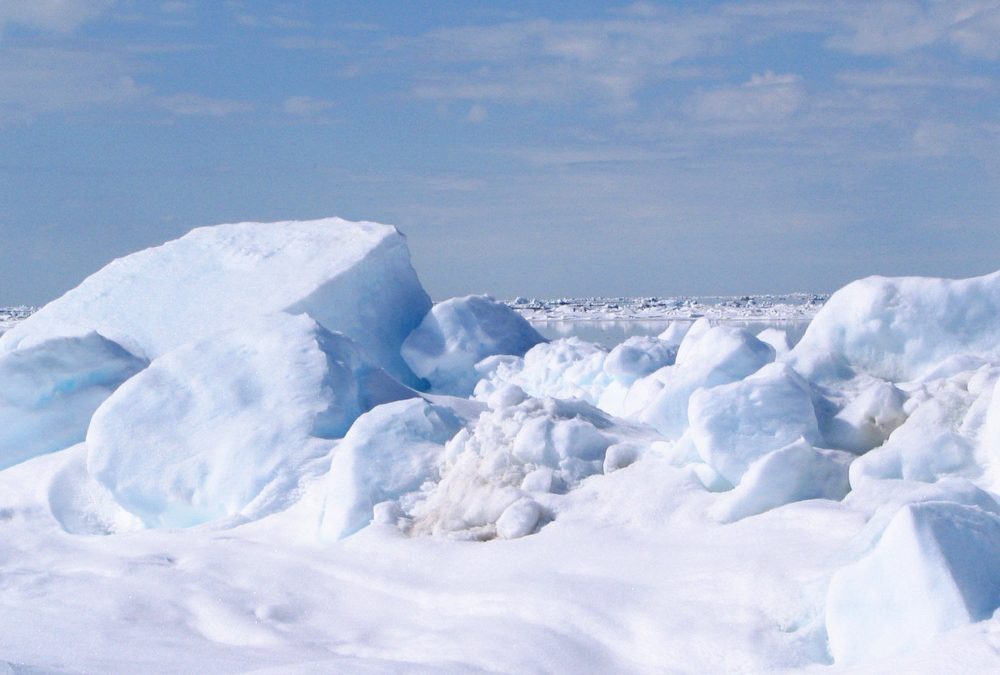
by Rick O'Connor | Jun 28, 2024
As I mentioned in Part 1, I taught Environmental Science in the 1990s and the first decade of the 21st century. The information provided below was taught at that time. The purpose of this series on Another Look at Climate Change is to see if the predictions made at that time are occurring.
Over the 4.5 billion years of our planet’s existence the climate has been altered by volcanic eruptions, changes in solar input, continental drift, and impacts by large meteors. Over the past 900,000 years our atmosphere has experienced periods of cooling and warming known as glacial and interglacial periods. We have been fortunate to be in an interglacial period over the last 10,000 years that has allowed humans to exist and grow. For the past 1000 years temperatures have remained relatively stable but in the last 100 years there has been a noticeable increase. This began when humans began to clear the forests and burn fossil fuels.
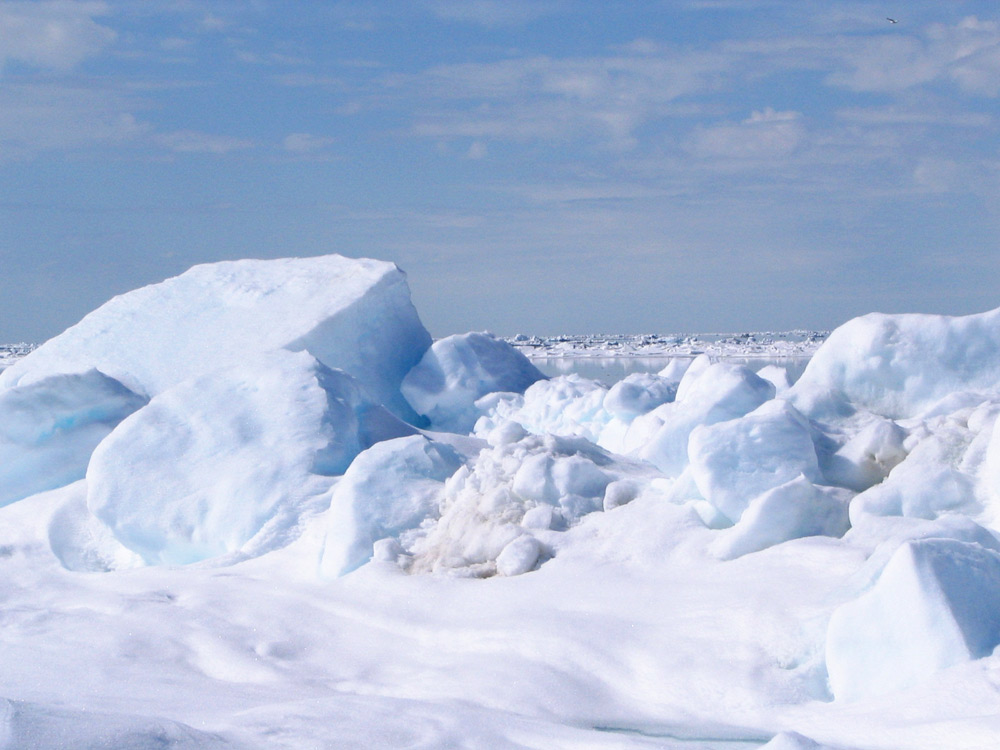
Our planet has gone through extreme climate change in the past.
Photo: NOAA.
Evidence of these temperature changes has come from analysis of radioisotopes, fossils, plankton, ocean sediments, and tiny bubbles in ice cores. Additional evidence has come from pollen found at the bottom of lakes, tree rings, bat dung in caves, and temperature records collected since 1861.
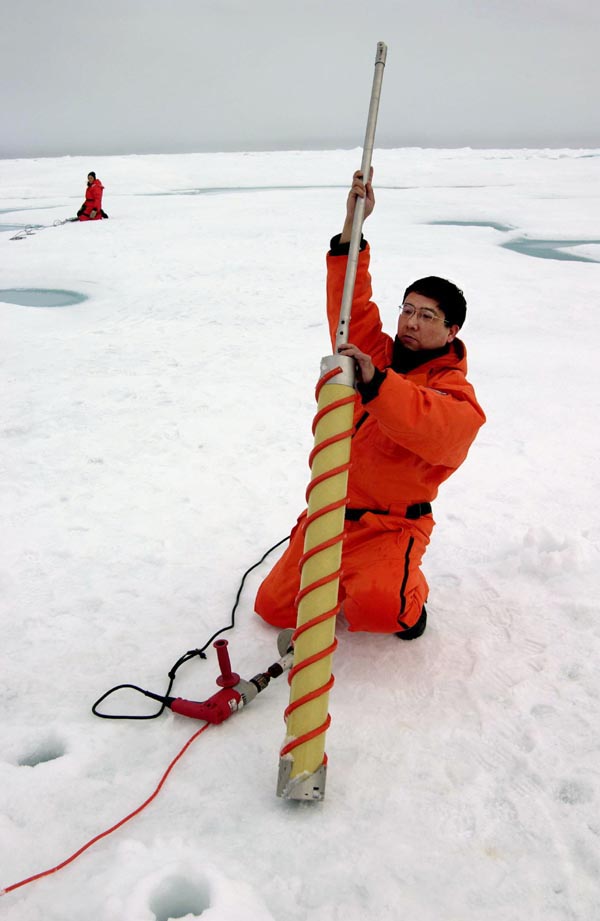
An ice core is being removed by a NOAA scientist.
Photo: NOAA
Interestingly we need the greenhouse effect to maintain the temperatures within a range for us to survive. The Swedish scientist Svante Arrhenius first explained this greenhouse effect in 1896. Solar radiation penetrates our atmosphere and warms the surface of the earth. Hot air generated from this surface heating rises but is trapped by a layer gas that includes carbon dioxide, methane, and water vapor. These gases act as a greenhouse allowing light through but trapping the rising heated air. Hence, they are known as greenhouse gases. Without this natural greenhouse layer, the planet would be too cold for us to live here.

The greenhouse effect.
Image: NOAA
The industrial revolution began about 300 years ago. The burning of fossil fuels, and loss of photosynthetic trees due to deforestation, resulted in significant increases in these greenhouse gases. According to a 2007 study, if CO2 emissions continue to increase at a rate of 3.3% each year, we will reach CO2 concentrations near 560 parts per million by 2050 and could reach levels near 1,390 ppm by 2100. At the time this was stated, 2011, scientific studies and models suggested we should prevent CO2 from exceeding 450 ppm. Going beyond this we might exceed a tipping point that could trigger climate change impacts for centuries. NOTE: NOAA published in 2023 that the atmospheric CO2 concentration was 419 ppm.
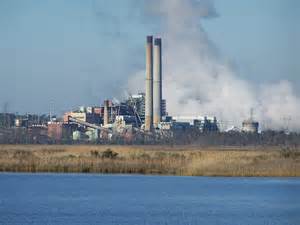
Power plant on one of the panhandle estuaries.
Photo: Flickr
In 1988 the United Nations and the World Meteorological Organization established the Intergovernmental Panel on Climate Change (IPPC) to review past climate changes and predict future ones. This network included over 2500 climate experts from 130 countries. In their 2007 report they stated…
- It is very likely (90-99% probability) that the lower atmosphere is warming.
- Human activities are responsible for this.
Evidence used for these statements include:
- Between 1906-2005 the mean global surface temperature had risen 1.3°F. Most of the increase had taken place SINCE 1980.
- Annual greenhouse gases emissions from human activity have risen 70% between 1970 and 2005. Average CO2 emissions were higher than they have been in 650,000 years.
- Since 1960 Arctic temperatures have risen twice as fast as the rest of the planet.
- In some parts of the world glaciers and sea ice were melting, rainfall patterns were changing, and prolonged droughts were on the rise.
- During the 20th century sea levels rose between 4-8 inches.
Data in 2011 showed that the melting of ice in the Arctic had increased since the 2007 IPPC report. One scientist, Allan Robock, stated that the ice was melting at a faster rate than their computer models said it would.
What is the scientific consensus about future temperature change?
- It is very likely (90-99% probability) that human activities are the cause of the recent increase. Particularly the burning of fossil fuels.
- It is very likely (90-99% probability) the earth’s mean surface temperature will increase 3.6-8.1°F between 2005 and 2100. NOTE: Since 2005 the rate of warming has doubled. In one year (2023) the mean temperature of the planet increased 1.44°F – the largest annual increase in 144 years. This was partially due to being an El Nino year.
In 2011 there was the question as to whether the oceans could help absorb CO2 from the atmosphere. At that time the ocean was absorbing between 25-30% of the CO2 emitted by humans. However, the solubility of CO2 in the oceans decreases with increasing water temperatures. As the oceans warm some of the dissolved CO2 would be re-released into the atmosphere and could amplify global warming and climate change. At that time, the oceans had warmed between 0.6-1.2°F during the 20th century. According to a 2007 study the oceans were absorbing less CO2 than they had in the past. NOTE: A 2017 study indicated that mean sea surface temperatures of the oceans have increased 0.22°F since 2000. This is twice as fast as the early models predicted.
The consensus is that the warming predicted by the computer models used at the time is occurring and – in some cases – faster than they thought.
In Part 3 we will look at what they thought some of the possible effects of this warming trend could be and whether any of those predictions have actually happened.
References
Miller, G.T., Spoolman, S.E. 2011. Living in the Environment; Concepts, Connections, and Solutions. 16th Edition. Brooks and Cole. Belmont CA. 674 pp.
Lindsey R. 2024. Climate Change: Atmospheric Carbon Dioxide. NOAA Climate. https://www.climate.gov/news-features/understanding-climate/climate-change-atmospheric-carbon-dioxide.
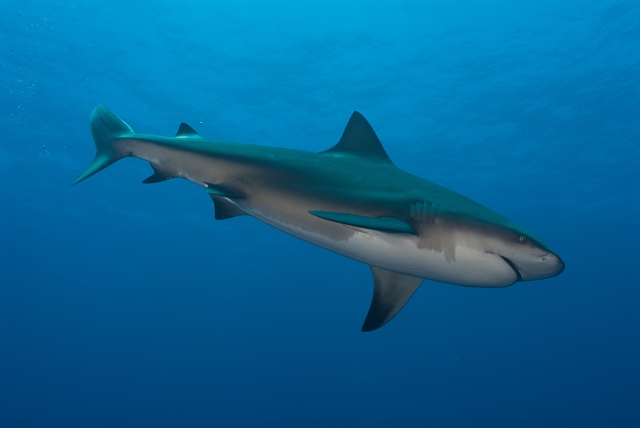
by Rick O'Connor | Jun 21, 2024
Today’s society is more educated about sharks and shark behavior than our forefathers. In the 18th, 19th, and much of the 20th century we thought of sharks as mindless eating machines – consuming anything available. Whalers would witness sharks consuming carcasses, as did many other fishermen. Sailors noted sharks following the smaller boats across the ocean, always present when bad situations occurred.
During World War II the U.S. Navy was moving across the Pacific and a deeper understanding of sharks was needed to keep servicemen safe. The sinking of the USS Indianapolis pushed the Navy into a larger research program to determine how to repel sharks and better understand what made them tick. After the war funding for such research continued. One of the leading researchers was Dr. Eugene Clark, who eventually founded the Mote Marine Laboratory in Sarasota with the intention of developing a better understanding of shark behavior. Dr. Clark frequently appeared on the Undersea World of Jacques Cousteau educating the public about how sharks function and respond to their environment. All with the idea of how to better reduce negative shark encounters.

Pregnant Bull Shark (Carcharhinus leucas) cruses sandy seafloor. Credit Florida Sea Grant Stock Photo
In the 1970s Peter Benchley wrote Jaws but included a marine biologist as one of the key characters who would provide science insight into how sharks work. The film was a cultural phenomenon. I remember standing in a line that wrapped the cinema twice to get in. This was followed by more funding for shark research and a better understanding of how they work. This was then followed by a popular summer series known as “Shark Week”, which remains popular to this day. Many of the old tales of shark behavior were disproved or explained. The idea of a mindless eating machine was replaced with a fish that actually thinks and responds to certain cues. People began to realize that shark attacks are quite rare and could be explained if we understood what happened leading up to the attack.
We now understand that sharks are fish, in a class where the members have cartilaginous skeletons (they lack true bone). They are one of the most perceptive creatures in the ocean, using their senses to detect potential prey and that there are signals that can “turn them on”. On the side of their bodies there is a line of small gelatinous cells that can detect slight vibrations in the ocean – from up to a mile away. The ocean is a noisy place, and it appears that sharks respond to different frequencies. I like to use the analogy of yourself being in a large student cafeteria. Everyone is talking and it is very noisy. Then someone calls your name. Somehow, amongst all the background clatter, you hear this and respond to it. Studies suggest that sharks do the same. With all of the noise moving though the ocean, sharks hear things that catch their attention and then move towards the source.

Blacktip sharks are one of the smaller sharks in our area reaching a length of 59 inches. They are known to leap from the water. Photo: Florida Sea Grant
As they get closer their sense of smell kicks in. Everyone has heard that sharks can detect small amounts of blood in large amounts of seawater – remember “Bruce” from Finding Nemo? It is true, but they do have to be down current to pick up the scent and they will now focus their search to find the source. Some studies suggest other “odors”, such as the urine of seals, might produce the same reaction that blood does. All may lead to shark to think a possible meal is nearby.
Eyesight is not great with any creature in the sea. Light does not travel well in water – but sharks do have eyes and they do see well (one of the old tales science disproved – that sharks are basically “blind”). However, because of the low light, they do have to be close to the target to get a visual. Some studies suggest that sharks are detecting shadows or shapes they may confuse as a potential prey, bite it, and then release when they discover it was not what they thought it was. This idea is supported by the fact that many who are bitten experience what is called “bite and release” – and they turn and swim away. It is also known that sharks have structures in the back of their retinas that act as mirrors, collecting what light is available, reflecting it within the eye, and illuminating their world. They believe they see pretty well at night – better than us for sure. The image they see may appear to be a prey item and may be what is producing the vibrations and odors that they detected.

The Scalloped Hammerhead is one of five species of hammerheads in the Gulf. It is commonly found in the bays. Photo: Florida Sea Grant
And they have one more “sixth sense” – the ability to detect weak electric fields. The shark’s mouth is not in position to attack prey as they move forward. It is on the bottom of their head and, one of the old tales, was that sharks must swim over their prey to bite it. Video taken during the filming for Jaws showed that the shape of the shark’s head changes at the last moment of an attack. The entire head becomes distorted to get the mouth in the correct position for the bite. The “eyes roll back” – as the old fishermen used to say – and the jaws move up and forward. At this point the shark can no longer use its eyes to zero in on the target. However, they have small cells around their snout called the Ampullae of Lorenzini that can detect the small electric fields produced by muscle movement – even the prey’s heartbeat – and know where they are. But – they must be very close to the prey to detect this.
Understanding all of this gives scientists, and the public, a better idea of how sharks work. What “turns them on” and how/when they will select prey. One thing that has come from all of this is that we do not seem to be high on their target list.

The Great White shark.
Photo: UF IFAS
The International Shark Attack File is kept at the Florida Museum of Natural History in Gainesville. It has cataloged shark attacks from around the world dating back to 1580. The File only catalogs UNPROVOKED attacks. With provoked attacks – those occurring while people are grabbing them, or fishing for them, or in some way provoked an attack – we understand why the shark bit the human. It is the unprovoked attacks that are of more interest. Those where the person was not doing anything intentionally to invite a shark bite, but it happened.
One thing we can tell from this data is that unprovoked attacks are not common. Since 1580, they have logged 3,403 unprovoked shark attacks worldwide. Considering how many people have swum in the ocean since 1580, this is a very small number. Note, the File is only as good as the reports it gets. In the past, many unprovoked attacks were not reported. But in our modern age of communication, it is rare that such an attack does not make the headlines today.

The Bull Shark is considered one of the more dangerous sharks in the Gulf. This fish can enter freshwater but rarely swims far upstream. Photo: Florida Sea Grant
Of these attacks 1,640 (48%) have occurred in the United States, followed by 706 in Australia. Many have explained this by the large levels of water activities people in both countries participate in. In the US Florida leads the way with 928 unprovoked attacks (57%), most of these (351 – 34%) are from Volusia County. This may be due to breakthrough emergency communications with Volusia County and thus more reports. Many of the reports are minor, small bites from small sharks such as blacktips, but unprovoked none the less. There are 26 unprovoked attacks logged from the Florida panhandle – 3% of the state total – and most of these (n=9) were from Bay County.
When looking at what people were doing when attacked, most were at the surface and participating in some surface water activity such as surfing, skiing, boogie boarding, etc. This is followed by surface swimming or snorkeling.
This brings us to the attacks this summer in the panhandle. There have been a lot of questions as to what may have caused them. They are still assessing the situation before and during these attacks to try and determine why they happened. As we have mentioned, we have learned a lot about sharks and shark behaviors over the last 50 years and several hypotheses are open for discussion. We will see what the investigators learn. Until then, the International Shark Attack File does offer a page on how you can reduce your risk. There is “Advice to Swimmers”, “Advice to Divers”, “Color of Apparel”, “Menstruation and Sharks”, “Quick Tips”, “Advice to Spearfishers”, and “How to Avoid a Shark Attack”. Read more on these tips at https://www.floridamuseum.ufl.edu/shark-attacks/reduce-risk/.


















